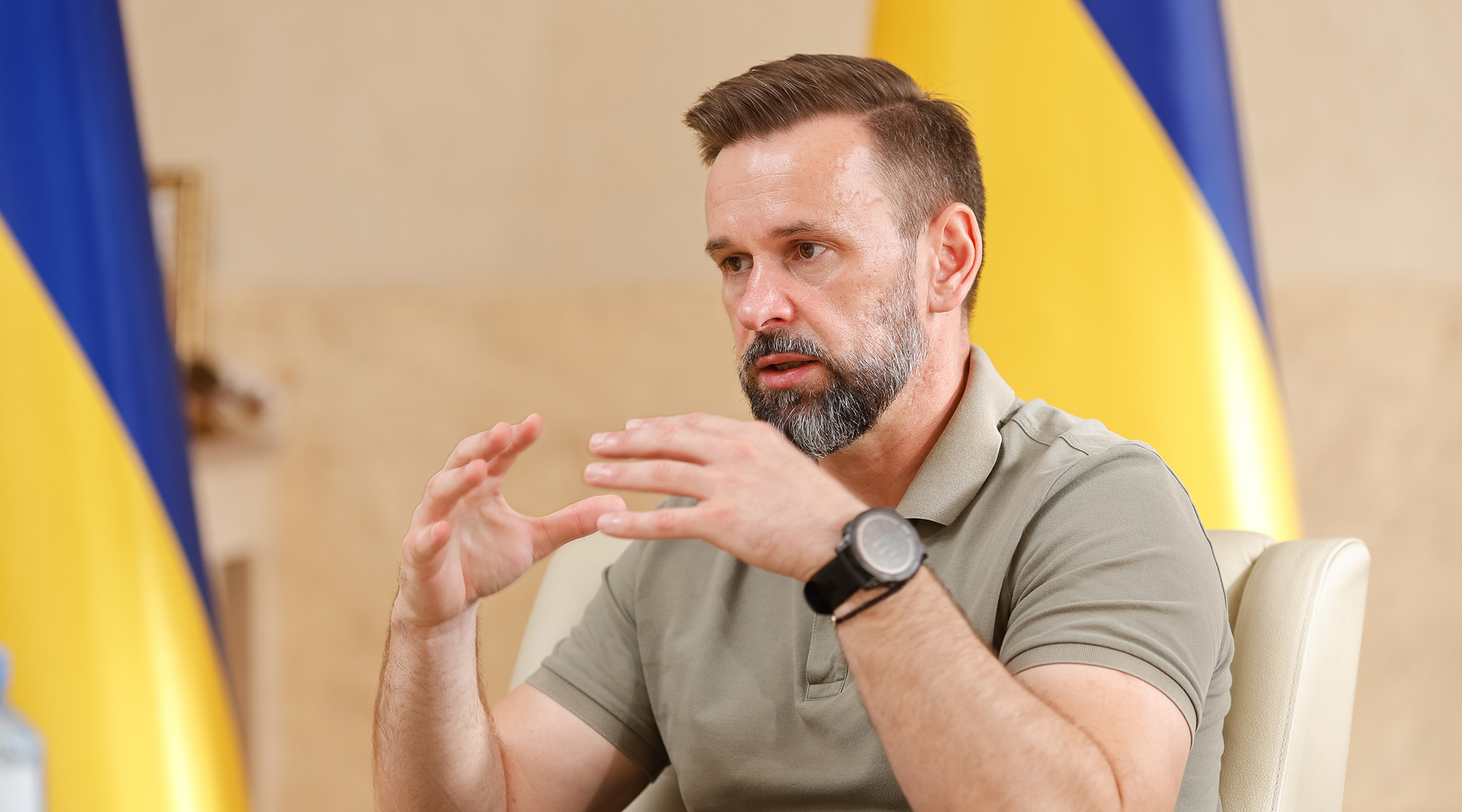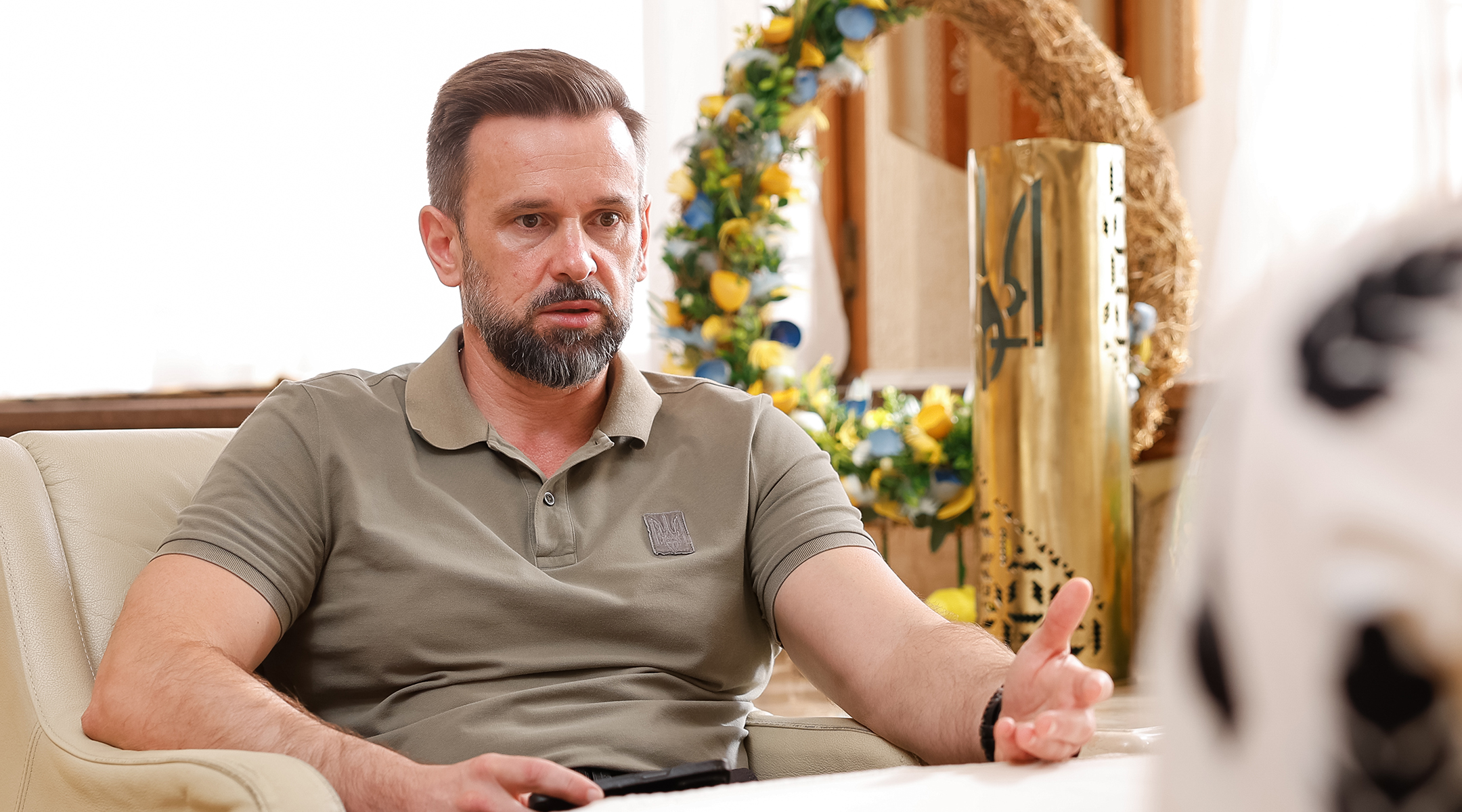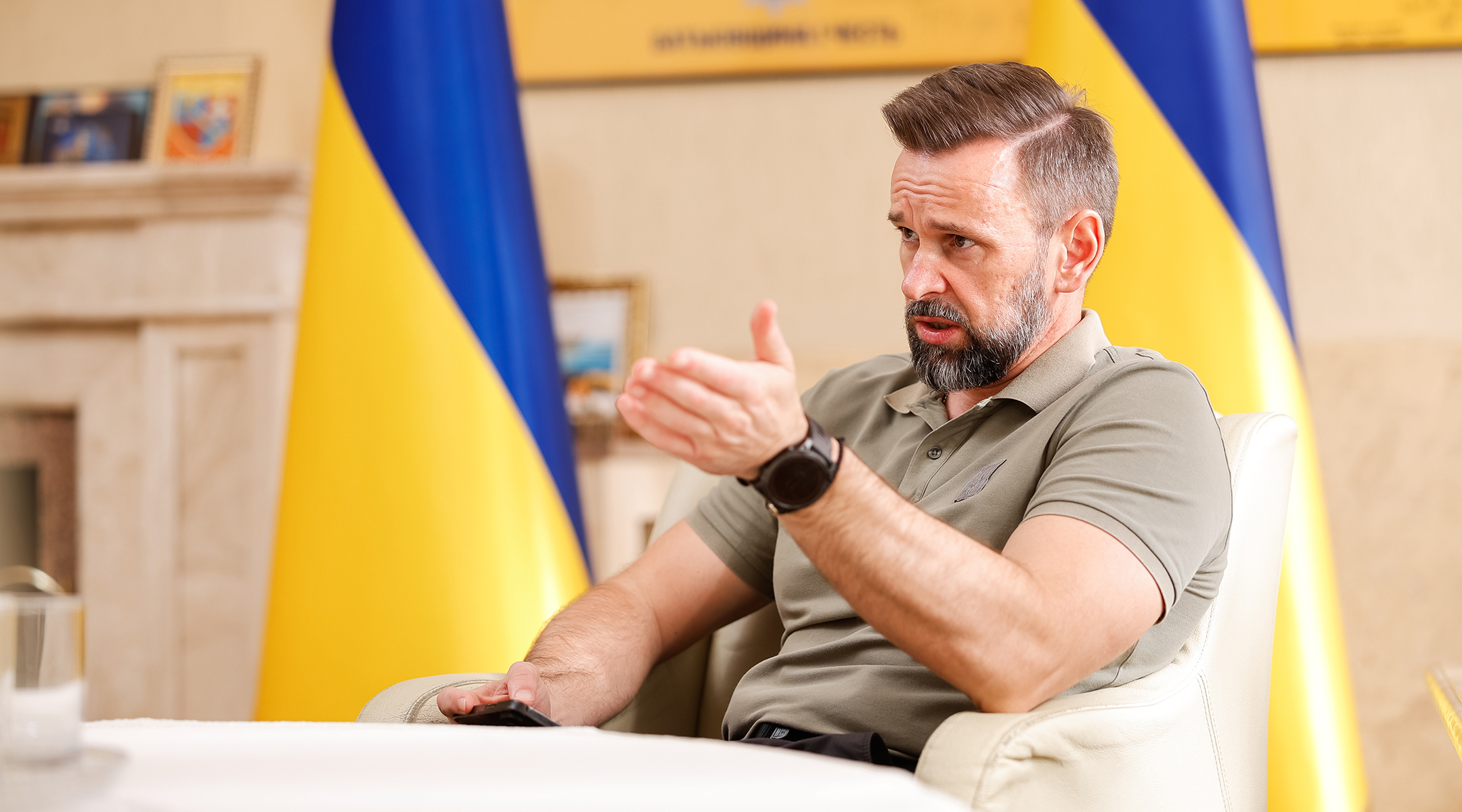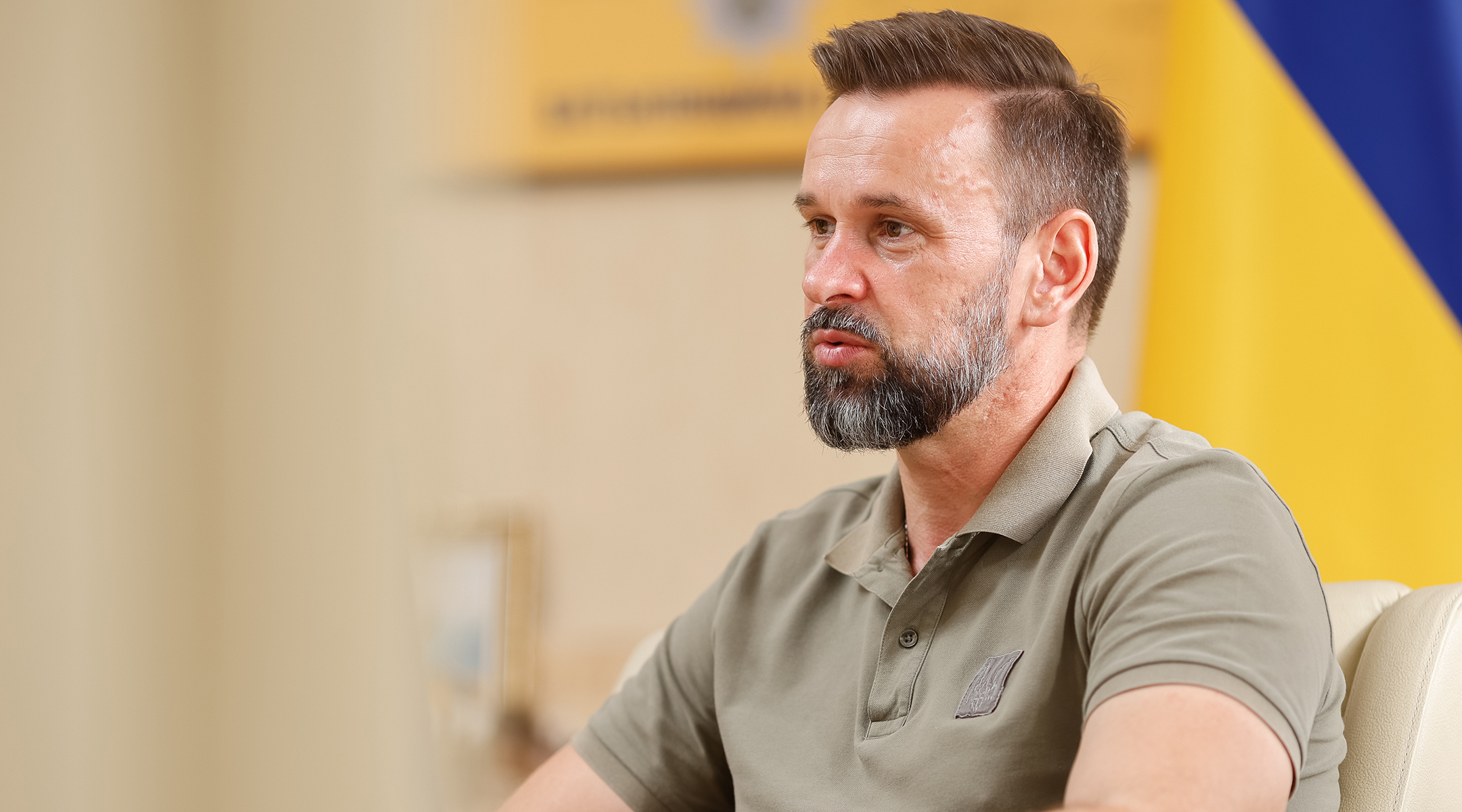Two weeks ago, the Defense Council of Zakarpattia called on all municipalities in the region to assess their renewable energy potential. Not everyone understands that the state will not be able to supply the communities with electricity for years because of the enemy's actions and destruction of the power system, says Viktor Mykyta, Head of the Zakarpattia Oblast Military Administration. And there can be no development without electricity.
Currently, the region is working to install gas-fired power plants by November and to provide some communities with the minimum energy needed during blackouts. But there is a need for decentralized power generation in the communities. It is suggested that this be done through the sun, wind and water. While the sun is more or less working – Zakarpattia is now the country's leader in the number of private solar power plants – projects of mini-hydroelectric plants and windmills in the region are involved in scandals because of their impact on fragile ecosystems.
In an interview with Ukrinform, we talked to the head of the Zakarpattia Oblast Military Administration, Viktor Mykyta, about how this will develop in the future.

AMOUNT OF PRIVATE SOLAR POWER PLANTS INCREASED AFTER THE 2022-2023 BLACKOUT
– Recently, you reported that Zakarpattia has become the country's leader in the number of private solar power plants. How did it come to 4.8 thousand private solar power plants in the region? Is it a current Zakarpattia trend to have solar panels at home?
– The story of the massive installation of private solar power plants in Zakarpattia began before the full-scale war, but the process accelerated after the blackouts of late 2022 and early 2023. Legal entities selling, installing and maintaining solar plants have long operated in the region. This business has been established and functioning well for ten years. After the blackouts, the process accelerated, not by individuals, but by businesses. We launched the Energy Help project to support energy independence for small and medium businesses, compensating them for purchasing generators and solar panels. But even then, we emphasized that solar panels and batteries are better than generators. Because a generator is cheap to buy, expensive to refuel, and then it breaks down, and those are endless expenses. Battery manufacturers and producers came to our market and people started actively buying solar power equipment, so the information campaign had some results.
Today, there are 4.8 thousand households in Zakarpattia with installed mini-SPPs, producing 3–10kW of energy. People install them in order to always have electricity at home and to have constant light free of charge during the sunny season, from spring to autumn. The process is still going on and the number of these households is still increasing. Obviously, for large companies that need to ensure a continuous production process and where the sun is not always available, solar panels are not an option. But this is a good case for residential users.
– What is the impact on the state of the energy system in the region of this number of private and small businesses' SPPs?
The more private SPPs in the area, the better.
– Residential users now provide up to 31% of the power to the system on sunny days. Overall, the region consumes up to 250 MW. On peak days, solar energy (households and large solar power plants) provides a total of up to 244 megawatts. As we continue to increase the number of solar power plants in the region, this percentage will continue to grow. And we need it to grow.
But there is another problem here: the energy system is broken and cannot balance itself freely, so when there is a lot of sun and therefore a lot of electricity, the system is overloaded, and it has to be regulated and balanced manually. However, only the large solar power producers are cut off for balancing because private solar power plants are very small and scattered along the streets in villages and cities. That's why we say that the more private mini solar power plants appear in the region, the better it will be. Everyone who owns one produces electricity not only for himself, but also for two or three neighbors. Ideally, if every fourth inhabitant has a solar power plant it will be impossible to destroy such an energy system, because it is distributed.
- My understanding is that the "Energy help" program is only for entrepreneurs. In this case, how do they provide incentives to ordinary citizens of Zakarpattia who install SSPs on their roofs or in their gardens?
– When the incentives were given to entrepreneurs, in many cases those who installed solar panels in their offices or production facilities also installed them at home. We raised the issue of offering loans to people who install solar power systems with banks two months ago. A one-time payment is also being considered. For example, we will reimburse 20 thousand UAH from the regional budget to those who buy a battery-plus-accumulator system.
We have been in touch with the management of Oshadbank, and they are willing to lend at 5, 7 and 9%. We are in discussion about how we can make these loans more favorable. If we reach an agreement, we will target entrepreneurs in urban centers to switch to solar, so there is no noise from generators.

MOST OF THE SOLAR PANELS ARE LOCATED “IN RICH VILLAGES”
– Where exactly are the most solar power plants in Zakarpattia: in cities or, on the contrary, in villages?
- “In rich villages,” we say. In fact, most of the private solar power plants are located in the villages and on the outskirts of the towns and cities. However, even though they could help themselves and the state in difficult times, many residents are still quite inactive and do not install solar panels, do not want to invest in them. So now we have 4,000 households with solar panels, and we require 14,000 or even 20,000 of them. Then, when the weather is sunny, we will be producing enough energy to supply our neighbors as well.
- If so, why does the region not have an information campaign about it?
The restoration of the destroyed power generation industry in the country is a matter of 5 to 7 years.
– In my opinion, as long as there is no agreement with the banks on the provision of credit to the population, we as authorities do not have the right to push this issue. On the contrary, we are very active in working with communities. Because it is about responsibility and sustaining life. Today, the fact that the state cannot guarantee the supply of electricity after the actions of the enemy is not fully understood by the communities. And without electricity, no other services can be provided: not health care, not education, not administration. Everything stops running. Everything stops developing. This is why energy independence is now a matter of survival for the community. The energy production of the country has been destroyed, and it will not be possible to restore it in one or two years. And the enemy will attack the energy industry.
Two weeks ago, we had a Regional Defense Council meeting to discuss the situation and inform each of the 64 community leaders. It was said that power cuts could last from a few days to a week, affecting the life of the communities and having negative effects. For this reason, through the decision of the Defense Council, we have obliged the communities to study their territories for renewable energy sources (sun, wind, and water). We must research and clearly define where and what energy can be produced in each community. The construction of such facilities is a long-term project, a matter of two to three years to complete. But the restoration of the country's power generation sector will be a matter of 5–7 years. The community will gain stability and have electricity, which means it will develop, if it takes this path now.
GAS PRODUCTION IS AN IMMEDIATE SOLUTION
– What can be done now in Zakarpattia to avoid being without electricity for weeks in fall and winter, speaking not of the future but of the present?
– One immediate solution is the production of natural gas, which is a necessity for the survival of the community during the winter months.
– Recently, you mentioned the Pylypets community as the first in Zakarpattia to have a gas power plant for electricity generation.
– Yes, there is a project under way there and the community will be self-sufficient in terms of electricity. It is a mobile generation, ensuring stable power production. The sun and the wind go here and there, whereas the gas plant can turn down and up the power, so can help stabilize the grid. A gas generator produces from 0.5 to 2-3 mW and has a capacity of 200 kW. The average consumption of a community is about 2-4 mW. In other words, it can generate its own power.

- How much does it cost?
- For Pylypets, for example, this is about EUR 1 million. The cost of the generator itself is 800 thousand, but that is without the connection and installation. So they install the generator and the output is 1.6 mW. The community consumes a total of 2 mW. So there is an agreement with the regional power company that there will be no disconnection of such communities at all, because there is no point.
– Okay, so where to get this million of euros? Not all of our communities are rich, far from it. What about the rest?
- Yes, such targeted businesses like in Pylypets do not exist everywhere. Other communities have utility companies, and there are agreements that banks are willing to do loans for them. The first payment for a gas generator is 150 thousand EUR. We are even ready to find these funds in the regional budget and lend them. The problem is that gas and electricity infrastructure is included in the cost of this generator. Placing them anywhere on your property will still require a gas line and electricity. That is why we have already conducted a study in the region together with the regional power companies and the regional gas companies and identified the points where power lines and gas pipelines cross. Zakarpattia has 72 of such points. If we install gas power stations at these points, we will be able to have 152 mW of power generation. For Zakarpattia, this means energy independence. If we add the hydroelectric power, which is 64 mW, and the sun, we are actually completely self-sufficient.
10 GAS GENERATORS SHOULD BE IN OPERATION BY NOVEMBER
- But it's not just a matter of going to the market and buying them – where do you get so many gas generators at once?
– We have met and talked with various manufacturers. We're in contact with one manufacturer (I won't name him) who can deliver 12 generators to the region in July/August. He has told us how it works, and what the start-up process is. It takes about six months to prepare the documentation, but we have already cooperated with the regional gas companies and the regional electricity distribution companies and this process has been shortened by three months. We have a working group in the infrastructure department that is helping with the documentation. We will do everything to speed up the process. Our expectation is that the first generators will be in operation in November.
– So, by the beginning of the heating season, 12 gas-fired power plants will be in operation in Zakarpattia under very favorable conditions?
– I set a realistic goal: to set up10 throughout the region. At the moment, my two deputies and I have divided up all six districts. Each of us is responsible for his or her own two districts and is working on this issue there. We talk to the leaders, explain, help with loans, and help with the paperwork. If there are no businesses in the community that are willing to do it, then the commitment goes to a service provider, like the one that cleans the roads. The city council will vote on it and guarantee that the generator will be the property of the community. For the lending bank, the value of the generator itself remains collateral because it never loses value, only gains.
MOUNTAIN COMMUNITIES COULD ALREADY BE SELF-SUFFICIENT IN TERMS OF ENERGY
– But there is another problem in Zakarpattia: there is no gas supply at all to the mountain communities. What about them?
No one can persuade a community if it is against the installation of a mini-hydroelectric power plant
– Thanks to mini-hydroelectric power plants on rivers, most of the mountain communities in Zakarpattia could already be energy self-sufficient. For example, in the community of Ust-Chorna there are three mini-hydroelectric power plants, and there is never a shortage of electricity. As I said, in order not to lose production due to conservation, such settlements are not cut off. We could have done the same in Velykyi Bychkiv. But the community there is against the construction of a hydroelectric power plant on the Shopurka River. They don't want a mini-hydroelectric power plant, and I would like to emphasize that we are not interfering with the community's decision: if they are against the installation of a mini-hydroelectric power plant, no one can force them to do it.
– Well, it's normal that people are against it: not everyone is willing to have electricity in the community but to lose a river or an ecosystem.
– Yes, but there is no other way for the state to provide electricity to the community. The community will have to make its own choice and live with it.
THE RUNIA WIND FARM PROJECT HAS NO LEGAL GROUNDS FOR RESTRICTION
– Since we have already mentioned this issue of choice, Zakarpattia is not only dealing with mini-hydroelectric power plants but also with wind power. Either you have hydroelectric power, but no river. Or you have wind power, but you have ploughed mountains. That's why many people oppose renewable energy projects. The Turks in Borzhava (Atlas Energy LLC, a Turkish company that planned to install windmills in the meadows of Borzhava in 2019 – ed.) is a scandal case in court. The Kramatorsk plant (a relocated windmill plant from Kramatorsk – ed.) and the windmills on Runia is a scandal, but without courts at the moment. The mini-hydroelectric power plant in Shopurka is the same. So we're reducing it to the lesser evil? To choose between a rock and a hard place? What do you, as the regional authorities, propose the communities to choose?
– If you don't know how to do something, do it by law, as I always say. First of all, we have decentralization. Each community decides for itself. We, as regional authorities, offer ways to develop, and they decide whether to follow or not to follow. That is why we now have an obligation for everyone to clearly calculate what and where renewable energy can be of use to them, and to determine the direction of development for themselves. There will be no electricity for years, but we have to live and develop. So they decide what they can have: three windmills, or two mini-hydroelectric power plant, or one big solar power station in a field. The community holds hearings and decides clearly: “We're against windmills. We're for solar.” We take the vote, we make it available, we look for an investor, and we build it.
– Do we have a queue of investors waiting for these community energy confirmations? That's it you've done research, public hearings, you're ready to install a windmill or mini-hydroelectric power plant, and somebody comes and installs it?
- Now, it is very important for the company to see that there are no obstacles in the way in a particular community.
– So in the ideal case, they should have researched, decided, and brought in an investment. I am sure that there will be lots of discussions about new projects in the region as well. But we already have the cases of Borzhava, and now the most relevant is the case of "Friendly Windtechnology" with windmills on the Runia. There are clearly two big groups of the project's opponents and supporters. And the question is who is in the majority.
As a resident of Zakarpattia and citizen of Ukraine, I also oppose some projects on certain mountainsides.
– The community has more supporters. Again, we are acting according to the law. We live in a democratic country, and many people coming from outside, who are not responsible for the lives of those who live in the community, can say and write whatever they want. No one will forbid it. The project implementation requires certain legal decisions in place. And there are. There must be certain environmental studies, and they are being done. My job is to make sure that this is done under the law. No matter what is decided, there are always going to be those who object. At the moment, there are no legal grounds to stop these projects.
I must say that I am also against some projects on certain mountain slopes, as a resident of Zakarpattia and a citizen of Ukraine.

– Can you specify them?
– I will not talk about that. But as for the Turia-Remeta community, it is a loss-making, so-called depressed community, struggling to survive. As long as the war continues – and the war will continue for years – we have no budget reserves to support and develop it. When it comes to receiving up to 40 million UAH a year in taxes from wind power generation (this is a condition for the installation of a wind farm in the Runa meadow: the owner of the wind farm will pay a portion of the money earned in the municipality in the form of taxes to the municipality – ed.) – naturally, the community chooses this path. Some oppose it, and they're entitled to do so, but they can't break with the majority that supports it.
By the way, I had a conversation with five other heads of Zakarpattia communities who already want to install windmills in their communities at the Defense Council when it came to energy.
THERE WILL BE PROTESTS, BUT THE PLANTS WILL WORK.
– So there is already a trend at the level of community leaders, and soon the installation of windmills will be fashionable in Zakarpattia “in rich villages”?
– Yes, more and more communities will want to install windmills as soon as they appear and produce electricity. But it doesn't happen just because someone wants it. Now we have to study where exactly in the region they should be installed.
– In fact, there are no specialized studies done to map the wind in our region. Shouldn't we start such research, and then we wouldn't need to face these questions of choosing – windmills as a result of losing unique areas in the mountains?
There are plastic bottles every 10 meters on the Runa meadow!
– This also needs to be addressed. It is not possible for me to come to a community and install a wind meter. The community has to make it clear that they want to do the research, and they have to give their permission. It works all over the world. Our partner Burgenland in Austria is a case in point. It was also a depressed area. Now they have 3,000 wind turbines. They have a surplus of electricity. And if 20 years ago it was one of the poorest provinces in Austria, now a generation of wealthy people has grown up, caring for the environment, developing intellectually. And here we are talking about supporting the berry pickers in the mountain meadows. They go there to pick some fruit and throw away tons of plastic and their garbage. The meadow of the Runa is now covered with garbage: there is a plastic bottle every ten meters!
Overall, we need to look beyond next year: we need to think about what Uzhhorod, with 200,000 inhabitants, is going to look like in 5 years, where Zakarpattia is going to be with the industry that we have gathered here to relocate.
– Okay, let's imagine a picture of the near future: The wind farm project on Runia has received an environmental impact assessment, has passed the hearings, and the first windmill is being built there. We have massive protests because there are quite a few opponents of windmills. Pickets, banners, people lying under machine wheels... What are you going to do?
– People have the right to be in protest. So if you imagine this picture, it will be like this: people are protesting, standing with banners and loudspeakers, the police are keeping public order, and the machines are working. That will be it. But there is something else. If there is a power cut, if there is no electricity, I think most people, including those who are standing there holding flags, will be busy trying to live in the absence of electricity. There is also the issue of enemy propaganda, which will certainly take advantage of this situation. They will wait for opinion leaders, followed by armchair experts, to start writing posts on social media, picking it up and accelerating it as much as possible. We will respond to that.
Tetiana Kohutych, Uzhhorod
Photos provided by Zakarpattia Regional Military Administration
